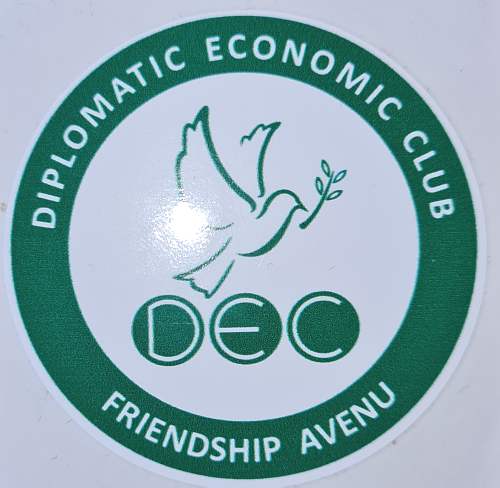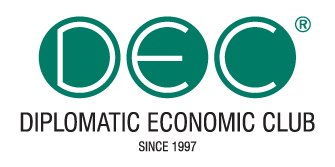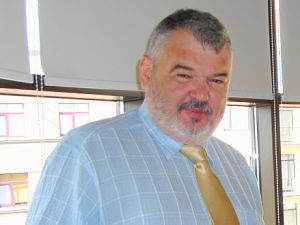Progress made in creating European patent
At the end of 2010, at the request of 12 member states, the Commission proposed an idea of enhanced cooperation in the area of European „unitary patent protection“. Soon after, another 13 Member States submitted their request to join the enhanced cooperation. The European Parliament gave its consent during spring 2011. The Competitiveness Council finally authorised the launch of enhanced cooperation with the participation of 25 EU member states.
It is well-known that patents are a driving force for innovation, growth and competitiveness. However, the EU single market for patents remains incomplete. Despite all the efforts that have been made for the last decade, protecting an invention in Europe costs far too much for most European companies due to high costs involved in patent validations on a country-by-country level.
Furthermore, the lack of a unified and specialised patent litigation system results in legal risks and high costs both for companies wanting to enforce and wanting to challenge patents. Improvements are therefore needed in order to give European companies opportunities to reap the full benefits of the EU Single Market.
The Commission wants to reach a final agreement on a European patent reform building on the Council’s decision on an Enhanced Patent System in Europe.European patent’s history: EPO The European Patent Convention (EPC) was signed in 1973; short after, in 1977 the European Patent Office, EPO in Munich was created. Initially made of four countries -Germany, France, Italy and the Netherlands, this independent pan-European organisation now includes 37 states and 3 associate members. With a budget of almost ? 2 billion, it employs over 7,000 international public servants spread between offices in Munich, The Hague, Berlin and Vienna. The EPO is currently directed by Benoit Battistelli. The three official languages of the EPO are German, English and French. The EPO’s mission is to support innovation, competitiveness and economic growth in Europe. Patents are issued after a centralised, harmonised procedure. When a patent application is submitted a search is made for any previous applications in order to check – worldwide — whether patents already exist. In this respect the EPO’s search is extremely important; because of this the analysis is very complete. The EPO then looks at the application in depth taking three criteria into consideration: novelty, inventiveness and industrial application. A patent is an industrial property document made up of both a description of the invention and claims demonstrating the inventiveness and industrial application. Six months after the application is submitted, the EPO issues an initial written opinion; this enables the applicant to modify his claims over a period of one year. The patent is published after 18 months and will be issued 36 to 48 months after the patent application patent was first submitted. The quality of EPO patents is recognised at international level by the major patent offices in the United States, Japan, China and South Korea, with which the EPO cooperating states. These countries often take their inspiration from the first publication by the EPO. The strength of the EPO is to issue patents of excellent quality because they result in only a very low rate of litigation: 3 to 5% compared with 30% of litigation for the American equivalent patent. The quality of the patents is due to the rigour used in the issuing process. In 2009 the EPO received 134,500 applications but issued only 52,000 patents, i.e. only 38%. Therefore, the process is therefore highly selective. Patent’s advantages Although the issue of European patents is centralised at EPO level, the applicant then has to have these patents validated by national offices in the European states. The European patent then becomes a bundle of national patents. However some costs are involved too: in addition to the tax paid to the EPO, the inventor has to pay an annual validation tax to each national patent office, in order to maintain the patent. Through the London agreement, ratified in 2005, the EPO succeeded, however, to reduce the issue tax by 30% by demanding for the first application a translation limited to the claims only into one of the three official languages (French, English and German). However, getting a patent validated in all member states is extremely expensive and applicants very often have to restrict themselves to the most economically interesting countries. See: «A single patent will make the European Union more competitive». Interview with Professor Alain Pompidou, former Chair of the European Patent Office, honorary MEP, Member of the Scientific Committee of the Robert Schuman Foundation. https://www.robert-schuman.eu/entretien_europe.php?num=55A European Union patent («EU patent») intends to combine two advantages. Firstly, it would benefit from the quality of work of the EPO, which would continue to issue patents using the same procedure. However, this patent would be validated right from the beginning in all EPO’s member states (joined the agreement on a EU patent) and the applicant would therefore have to pay only one single validation tax. The second advantage would be the harmonised processing of litigation. Contrary to appeals that oppose an applicant or competitor to the EPO, litigation generally opposes a competitor to the applicant. For the time being, litigation is dealt with by the courts of member states which sometimes render contrary judgements between states, or even within the same state (between England and Scotland, for example). It would be more coherent to have a single EU patent, issued by the EPO and then validated from the outset in all member states as well as a harmonised method for processing litigation, argued Mr. A.Pompidou. EU/Community’s patent: initial steps The European Council in March 2000 called for the creation of a Community patent system to address existing shortcomings in the legal protection for inventions, thus giving an incentive for investments in research and development and contributing to the competitiveness of the economy as a whole. The Commission put forward in August 2000 a proposal for a Council regulation on the Community patent. See: COM(2000) 412 final. Introduction of a Community patent system, however, requires the adoption of the idea by the Council and of subsequent implementing regulations, which could be adopted through so-called comitology procedure. In the framework of the creation of a unitary Community patent, two Commission proposals have also been presented on December 2003 on the establishment of a Community patent jurisdiction.In December 2009, the European Union Council unanimously adopted a political agreement to create a EU patent as well as a «European and EU Patent Court». This court was initiated through a draft of an international agreement (including member countries of the EPO), which the Council submitted to the EU Court of Justice for an opinion. The latter has judged, on 8th March 2011 that this agreement did not comply with current Treaties in force. In July 2010 the Commission proposed a regulation on the language regime for patents. However, member states did not succeed in adopting this regulation unanimously as required by the Treaty on the Functioning of the European Union (art. 118 TFEU). In order to make progress on this field, on 7th December 2010, 10 EU member states asked the Commission to implement enhanced cooperation (Germany, Denmark, Estonia, Finland, France, Lithuania, Luxembourg, The Netherlands, Slovenia and Sweden). These 10 States were quickly joined by 15 others, making 25 member states out of the EU- 27, with Italy and Spain refusing to join. In March 2011, the Council finally authorised this reinforced cooperation between the EU-25 member states. Already in April 2011, the Commission published two proposals for a regulation: the first, relating to the implementation of the enhanced cooperation, should be adopted as a co-decision by the Council and the European Parliament, and the second, relating to the language regime, should be adopted by the Council unanimously, after consulting the European Parliament. Enhanced cooperation for a unitary patent The negotiations on the establishment of the EU patent failed at the end of 2010 because the EU member states were not able to agree unanimously on the applicable language regime. On 14 December 2010, on the basis of requests from 12 member states, the Commission (then under the Commissioner Barnier’s authority), submitted a proposal to authorise enhanced cooperation in the area of the creation of unitary patent protection. The Competitiveness Council authorised the launch of enhanced cooperation with the participation of 25 EU member states. The implementation of the authorising Council decision requires the adoption of two regulations; one on the creation of unitary patent protection and a second on the applicable translation arrangements. On 13 April 2011, the Commission adopted the proposals for the implementing regulations. See: https://ec.europa.eu/internal_market/indprop/patent/index_en.htm In December 2009, the Council unanimously adopted conclusions on an enhanced patent system in Europe which also covered major elements for the European Patent Court.See: Press Release- IP/09/1880The Court of Justice of the EU (CJEU) delivered an opinion on the compatibility of the expected agreement on the European and EU Patent Court with the EU Treaties. The Commission welcomes the delivery of the opinion and will analyse the decision with a view to identifying appropriate solutions. However, the opinion should have no impact on the decision taken by member states in March 2011 at the Competitiveness Council following the consent of the European Parliament authorising a move to enhanced cooperation in the area of unitary patent protection. The creation of unitary patent protection is legally distinct from the creation of the European Patent Court. Presently, it is important to maintain the momentum to bring decades of discussion on the EU patent to a quick and successful solution through enhanced cooperation.In parallel, the Commission will work equally quickly to find an appropriate way forward for the Patent litigation system following the Court’s opinion. The agreement on the European Patent Court and the creation of the unitary patent protection through enhanced cooperation are two distinct projects. There is no legal reason for member states not to adopt the decision authorising enhanced cooperation creating unitary patent protection. Now that the opinion is available, the parallel work on patent litigation can resume with the same momentum as the work on the European patent itself.Eugene Eteris, RSU, European Studies Faculty, Baltic-course.com

 Appeal to world leaders and humanity
Appeal to world leaders and humanity
